Introduction
Earthquakes are the worst of the natural disasters. Because of their overwhelming power and the damage that they cause, men have been studying them for centuries. The first earthquake observatory was established during the East Hun Dynasty of China in 132 AD. The first (?) seismologist Heng Chang used a big bowl on which eight dragons were placed, each with a marble in its mouth, and eight frogs on the floor to catch the falling marbles. With this apparatus, Mr. Chang not only recorded the earthquake, but also captured the direction/azimuth of the epicentre (Fig.1).
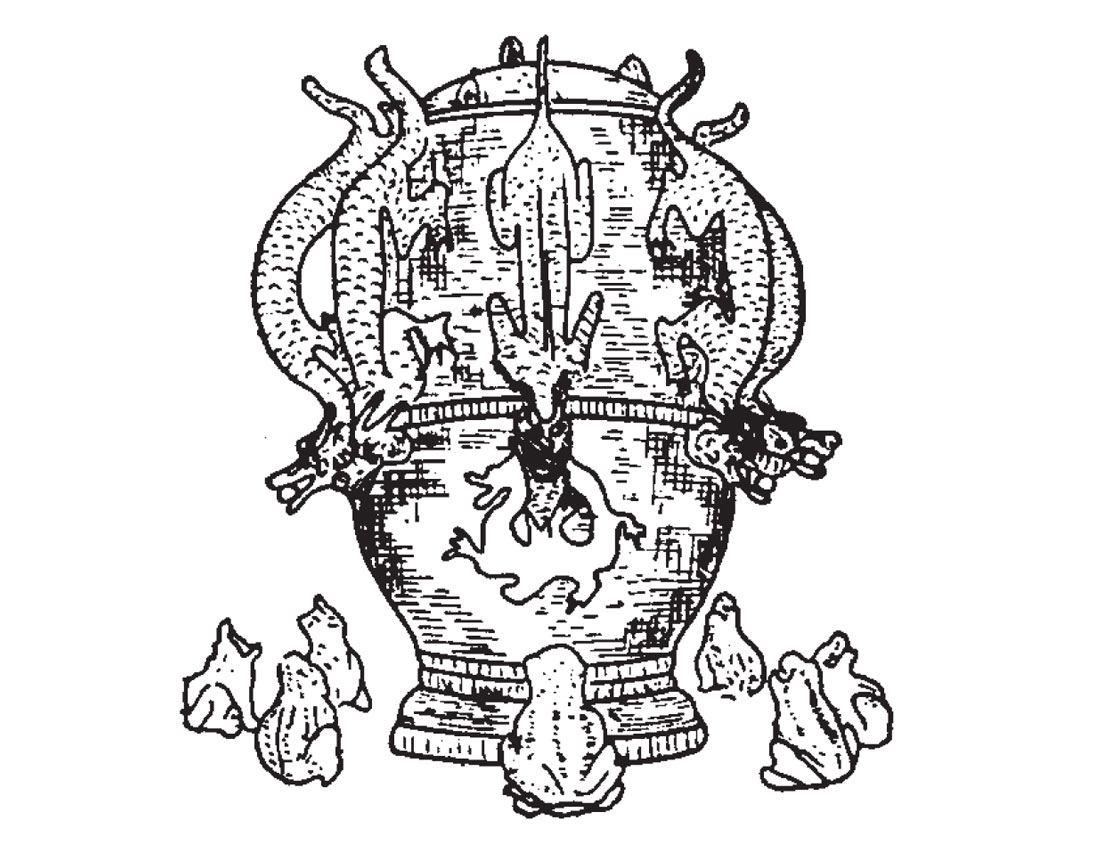
Particularly in the last few decades, we have gained a much better understanding of earthquakes, chiefly owing to the concept of Plate Tectonics. In addition, monitoring tiny earth movements by continuously recording Global Positioning Systems (GPS) stations in earthquake regions provides invaluable data to improve our ability in earthquake prediction.
Earthquakes generally occur along faults close to known plate boundaries, which are in continuous movement relative to each other. This movement is thought to be driven by convective processes in the earth’s mantle. Plate motions cause a slow accumulation of elastic strain energy in rocks. When the strength of the rocks cannot withstand the accumulated strain, a sudden relief seems to occur, either by rupture of rocks or by slippage along fault planes. This disruptive adjustment or sudden yielding to stresses is an earthquake. A portion of the energy propagates through the earth and generates seismic ground motion. From the focus of an earthquake “hypocentre” through the earth interior to the point on the surface “epicenter”, seismic waves travel in the form of body waves “P and S”, but thereon surface waves “Rayleigh and Love” are also generated. Rayleigh waves have a retrograde, elliptical motion at the surface and are the slowest, but often the largest and most destructive of the seismic waves caused by an earthquake. Monitoring and studying GPS results is extremely important for earthquake prediction. Stress changes increase the probability of an earthquake in the area; remarkably some earth scientists, particularly Barka et al. in 1977, had estimated a 12% probability of a major earthquake during the next 30 years exactly in the Izmit area.
Regional Framework
The tectonic framework of the eastern Mediterranean and Middle East region (Fig.2, Toksoz) is dominated by the collision of the Arabian and African plates with Eurasia (e.g. McKenzie, 1970). Plate tectonic models suggest that the Arabian plate is moving in a N-NW direction relative to Eurasia at a rate of about 18-25 mm/yr. and the African plate is moving northward to Eurasia at a rate of ~10 mm/yr. while its leading edge is subducting. Being located in the middle of all these plate movements creates complicated kinematics for the Anatolian (Turkish) plate. These motions are thought to be accommodated by lateral slips on the North and East Anatolian faults. GPS results prove counterclockwise rotation and westward motion of the Anatolian plate.
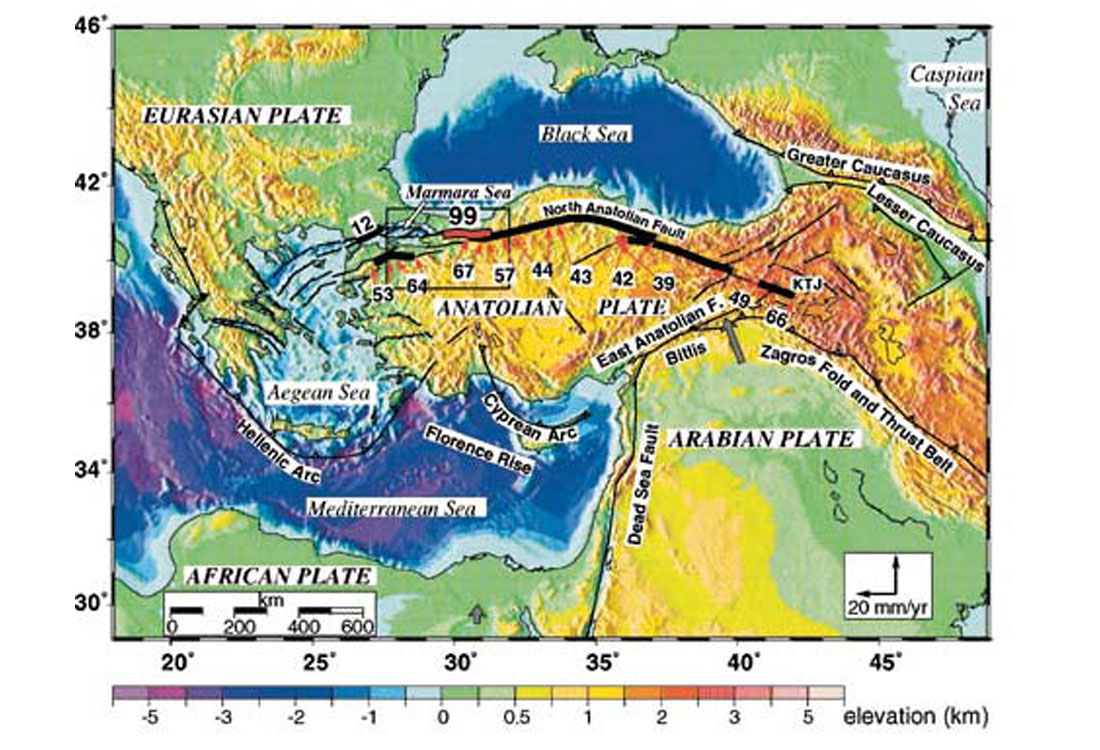
The North Anatolian fault is a major, right-lateral, continental strike slip fault. It emerges as a close analogue of the San Andreas Fault of California, with the two continental transforms sharing similar slip rates, total length and straightness relative to their poles of rotation (Fig. 3). Both have one magnitude 8 shock: 1908 San Francisco and 1939 Ercinzan. But while the San Andreas Fault produced three major earthquakes in this century, the North Anatolian fault has suffered twelve such shocks. Throughout known history, many major earthquakes have occurred along virtually the entire length of the North Anatolian fault. It is remarkable that the epicentres of earthquakes during the 10th century were moving from west to east, while the direction appears to be reversed this century, from east to west (Fig. 4). Note the two digit numbers annotated in the figure refer to the year of the earthquake.
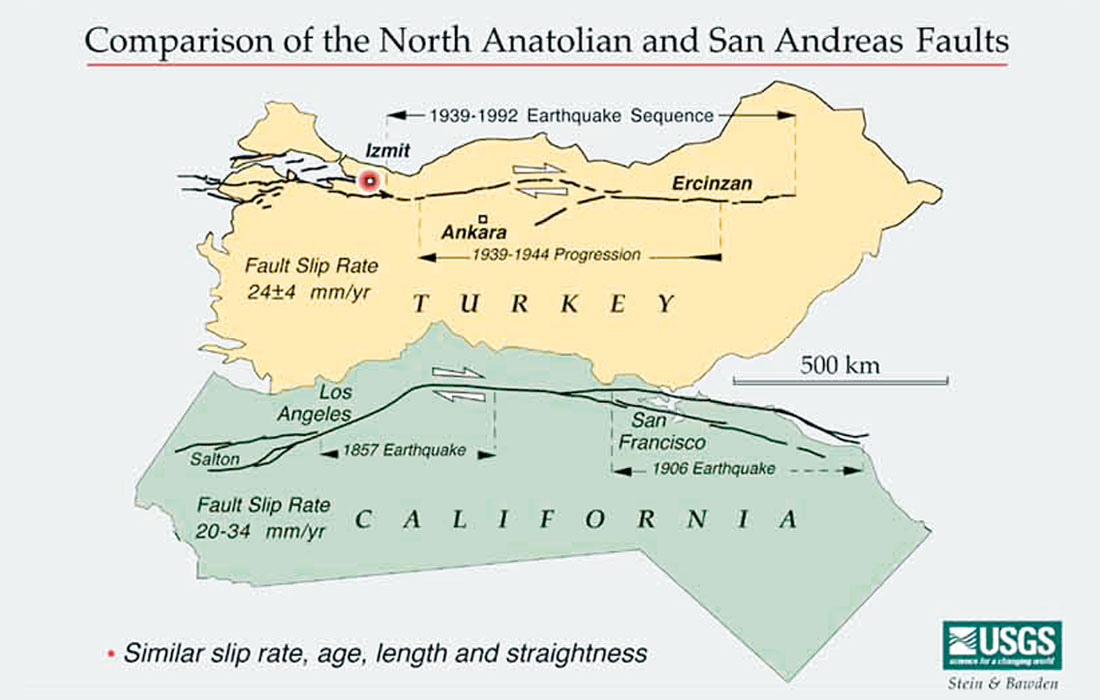
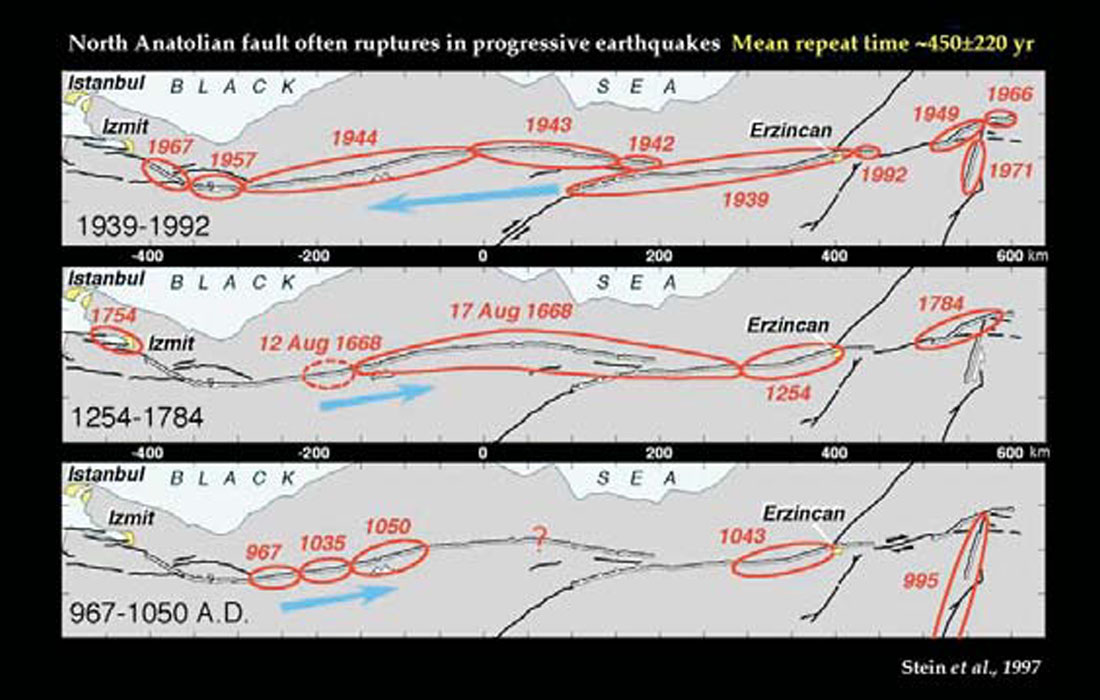
Izmit – Turkey Earthquake
On August 17, 1999 a magnitude 7.4 earthquake struck Izmit, the epicentre ~ 100 km east of Istanbul. Fig.5 shows the seismic record of the main shock of the earthquake.
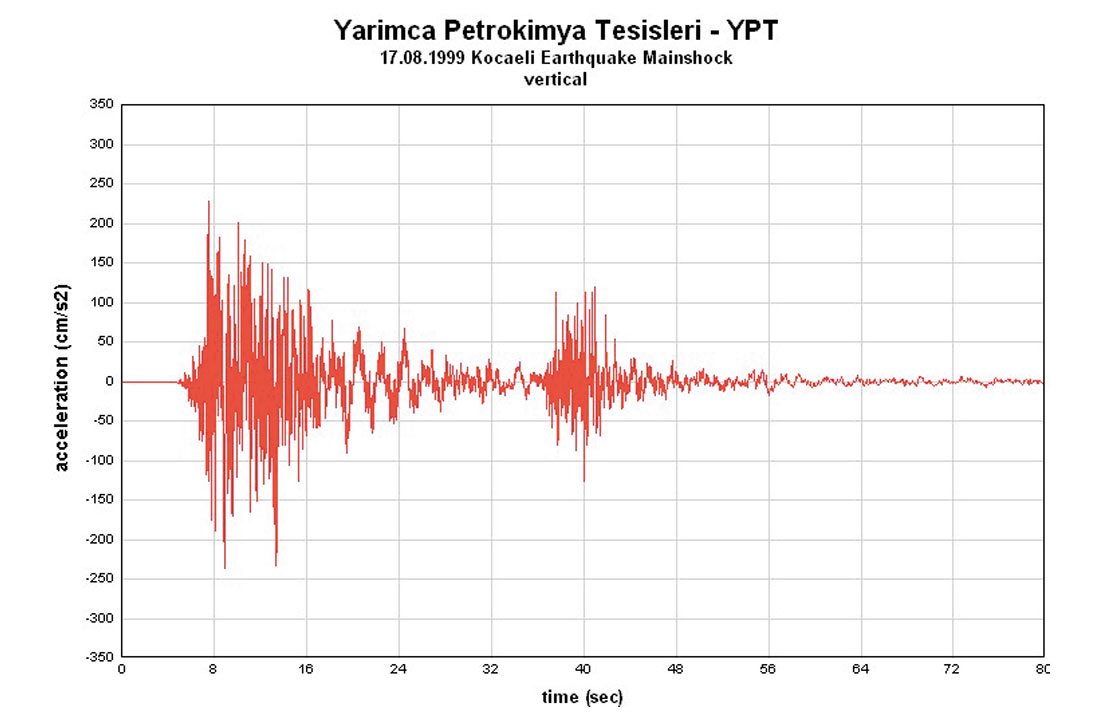
The hypocentre of the shock was at a depth of 17 km, approximately half way down to Moho. The source of this shock is calculated to be equivalent to 7,558 Kilotons of TNT, which is close to 1000 of the atom bombs dropped over Hiroshima in 1945 (Coruh, C., personal comm.). Occurring in Turkey’s most heavily populated and industrialised region, the earthquake caused more than 30,000 deaths (including missing) and US$6.5 billion in direct property losses (Sept. 14, 1999, World Bank report). The total economic impact will probably be close to $20 billion, including indirect and secondary losses (Reilinger, Toksoz, McClusky and Barka, Jan. 2000).
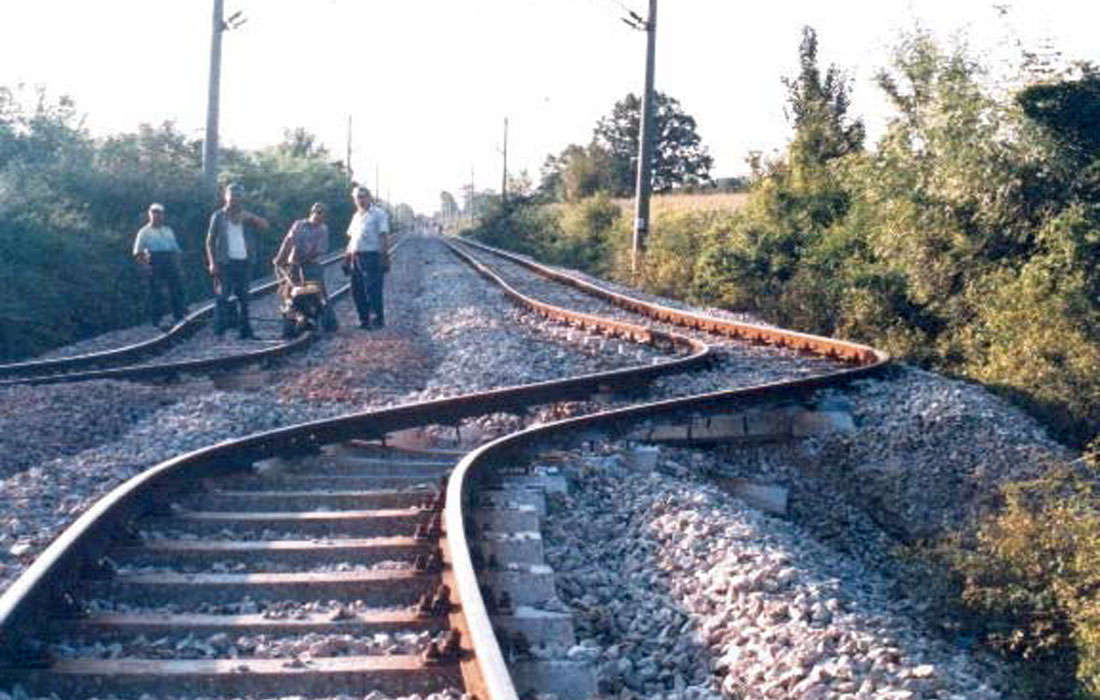
The Izmit earthquake is remarkable in being the latest in a series of 11 major (M>6.7) earthquakes this century that have broken more than a 1000 km length of the North Anatolian fault. This earthquake caused a 120 km surface rupture, with right lateral offsets of 1.5-5 m (Fig.6). The following figures 7 and 8 demonstrate the sheer destructive power of the earthquake on buildings and devastating impact on human life, both material and psychological.
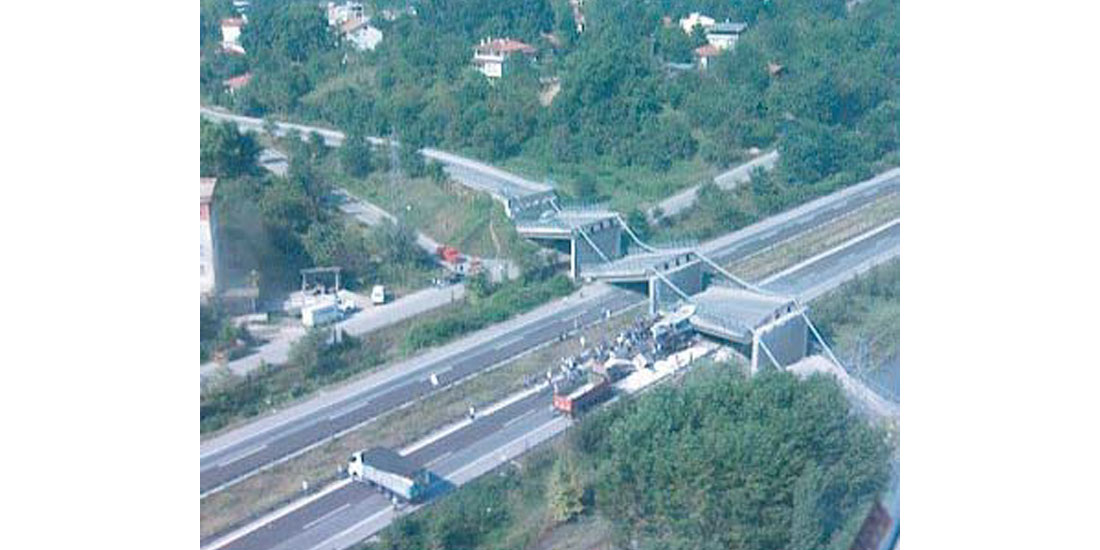
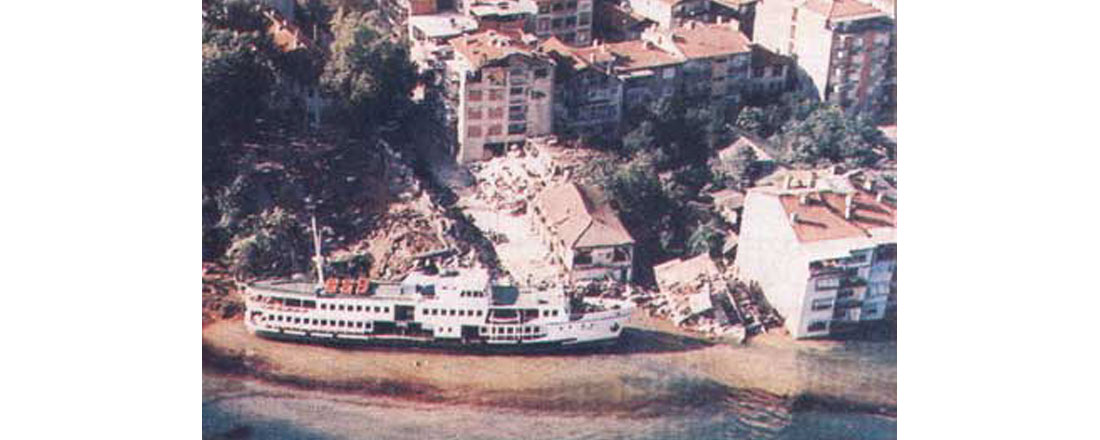
Conclusion
Studying earthquakes is very important because they have direct impact on human life. Modern GPS stations are providing invaluable quantitative information on pre-, co-, and post-seismic deformation related to earthquakes in active areas. The remarkable series of earthquakes along the North Anatolian fault, as well as the San Andreas fault, provide an ideal data set to further our understanding of earthquakes, with implications for forecasting and mitigating the effects of future ones.
We know that we cannot stop earthquakes. Equally, we know that earthquakes don’t kill people; but failing/collapsing buildings do. Therefore, what we can and must do is to strictly abide by the required building codes in earthquake-prone areas.

Acknowledgements
I wish to thank Dr. C. Coruh of Virginia Tech. for his generous help with this article.










Join the Conversation
Interested in starting, or contributing to a conversation about an article or issue of the RECORDER? Join our CSEG LinkedIn Group.
Share This Article